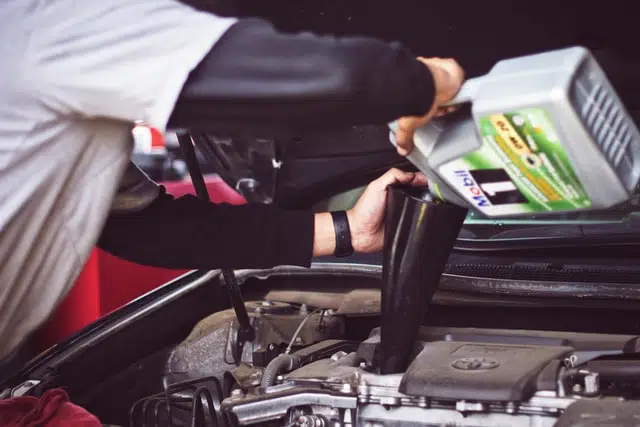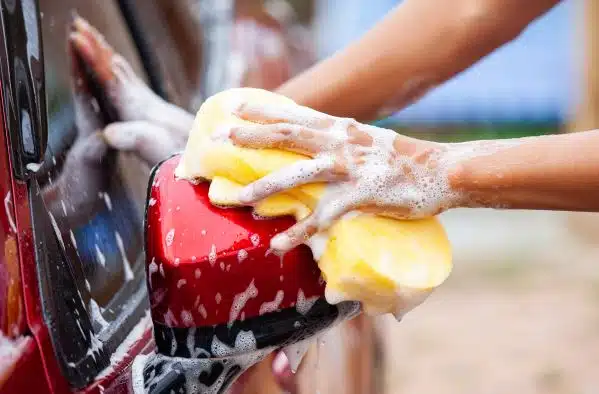Categories
Tags
animal welfare
breed profile
buying a car
buying a pet
Car
car accessories
car care
car features
car insurance
Car safety
car sales
car service
cat
cat behaviour
cat body language
Cat Breeds
cat food
cat insurance
comprehensive car insurance
Dog
Dog Behaviour
dog body language
Dog Breeds
dog food
Dog Insurance
dog training
eco friendly cars
Kitten
New Car
pet accessories
pet activities
Pet Adoption
pet breeders
pet days of the year
pet fun stuff
Pet Health
pet insurance
pet parenting
Pet Safety
pet services
Puppy
rescue pets
road safety
road trip
safe driving
Recent Blog:
Facebook Posts
2 days ago
Growing old sometimes means we can’t take care of pets anymore. Find out some advice on what to do when this happens:![]()
![]() Senior Pet Parents – Contingency Plans for Your Pet – bit.ly/44bzwkS
... See MoreSee Less
Senior Pet Parents – Contingency Plans for Your Pet – bit.ly/44bzwkS
... See MoreSee Less
Senior Pet Parents' Contingency Plans for Pets
www.pd.com.au
Sometimes senior pet parents need more downtime. For older pet owners, this can be tricky to navigate if their dog or cat is full of beans and wants to4 days ago
Before you rev up the engine, let’s run through a checklist of things to do before starting your car. Not only do these steps ensure your safety (and that of others around you), but they also help in maintaining your vehicle's longevity.![]()
![]() Driving Tips: Your Checklist Before Starting Your Car -
... See MoreSee Less
Driving Tips: Your Checklist Before Starting Your Car -
... See MoreSee Less
Driving Tips: Your Checklist Before Starting Your Car
www.pd.com.au
Heading out for a drive? Hold up a second! Whether you're dashing off to work, running errands, or embarking on a road trip adventure, there are a few1 week ago
Are intestinal worms setting up camp in your dog’s gut without paying rent? Here’s how to spot the main culprits and get rid of them too:![]()
![]() Preventing, Identifying and Treating Intestinal Worms in Dogs - bit.ly/43YjCKu
... See MoreSee Less
Preventing, Identifying and Treating Intestinal Worms in Dogs - bit.ly/43YjCKu
... See MoreSee Less
Preventing, Identifying and Treating Intestinal Worms in Dogs
www.pd.com.au
Intestinal worms, such as roundworms in dogs are one of the least glamorous topics on the planet. These intestinal parasites that basically use our dogsWe’ve all experienced that moment, usually about a second too late, when your hand grasps a searing hot steering wheel. You howl in pain, curse the sun and may even let rip with a few creative words. And if kids are in the car, you’re now looking forward to a ‘talk about swearing’ as well. Great. Ironically there is another danger lurking…What you need to be thinking is how to protect your car from salt (and your hands from hot steering wheels).
Nodding along or having a bit of a chuckle? Most of us have been there. But where we really don’t want to be is dealing with the ramifications of long term sun and salt air exposure… That’s not just inconvenient, it’s the kind of damage that can end up costing you lots of money.
You no doubt have other things you prefer to spend your cash on, so keep reading for tips on how to protect your car from salt and sun damage. Protect your car over summer and beyond.
Sun Damage vs Your Car
Australia is the sunburnt country, but all this sun year ‘round means our cars are susceptible to sun damage. If you take a look at the weather forecast for the foreseeable future, it looks like it’s only going to get more intense.
The ultraviolet (UV) rays of the sun oxidise and fade car paint, making the car look old and tired. Just like humans. Not a good look.
Sun damage isn’t only just ‘skin deep’ either. It can penetrate all the way to the bare metal.
This deterioration will become obvious after a few years (or even less) of prolonged or constant exposure to the hot Aussie sun. It not only damages the paint, it can cause extensive damage to almost all parts of your car.
Let’s look at what you can expect if you don’t protect your car from the sun.
Rubber and plastic parts can melt or corrode
Over time, the exposure to sun and heat can cause rubber seals around your windshield and car doors to melt or break down. You may not notice until the windshield starts to leak, ironically, during a rainstorm. And naturally, you’ll be caught in traffic when this happens.
Because… of course.
In extreme cases, melting rubber may even cause metal panels to fuse shut.
Your windscreen wipers can also become brittle and break, with the potential to fail during use, exposing your glass to bare metal and scratching your windscreen. Like nails on a chalkboard. *shudder*
Damage to your dashboard
Your car’s dashboard may also start to crack or bend. If you drive a sedan type car, the same may be happening under the rear window as well.
Not only does it look ugly, but a damaged interior will bring down the value of your car when you need to resell it. Not to mention you have to look at it every day.
Liquids can evaporate
Extreme heat can affect your engine’s hoses, causing cracks and enabling coolant to evaporate. This means you won’t just use it faster than expected, you can risk cooking your engine and causing some serious damage.
Don’t forget your transmission and power steering fluid, too – our Aussie heat can cause evaporation right from within the tank. Ditto with the windscreen wiper liquid.
Without the necessary fluids, things may start to bump and grind. And let’s be real here… watching something bump and grind is only fun when it’s Channing Tatum.

How to protect your car from the sun
One of the best ways you can protect the exterior of your car is to wash it regularly. This helps prevent the dirt bonding with the paint and damaging it.
Even better, after washing and rinsing, give it a good wax to prevent fading, discolouring and oxidation.
It’s not only the exterior of your car you need to be worried about. Its glass windows let the sunlight pass through then trap the heat inside – like the greenhouse effect.
So, with all that glass you we recommend you use tactics such as:
- Parking in the shade when you’re out and about
- Storing your car in a garage or undercover
- Using a dashboard protector
- Installing a solar shield in the front and rear windows while parked
- Using a steering wheel cover
- Tinting your windows and use window shades
- Installing seat covers
- Cleaning and moisturising exposed surfaces regularly, to prevent cracking interior and trim (again, just like humans)
TIP: It’s worth noting that while trees provide some shade, they’re also full of bugs and sap that can drop sticky residue on your car. And let’s not forget bird droppings. There’s nothing lucky about those acids that can eat away at your paint.
So, it’s best to avoid long term parking under one. Have no other option? Invest in a heavy-duty car cover to protect the paintwork and keep your car cooler.
Here’s how to protect your car from salt damage
While the salt air makes us feel fresh and alive, and makes our hair look fabulous and full (well, most of us), it will only make our cars rusty and corroded. As adorbs as he is, nobody wants their car to look like the rusty old truck Mater from the Cars movies.
Salt, otherwise known as sodium chloride, is one of the biggest causes of rust and corrosion in cars. When salt comes into contact with metal, the iron in your car reacts with oxygen and forms iron oxide – aka rust.
Where does rust form?
Under the hot sun, the pores in your car’s paint expand. This means it absorbs salt faster. Chips, scratches and other minor damage will also attract rust more readily. So, the more time you’ve spent on the road, the higher the probability of rust forming.
Throw in some water or humidity with a hot day and you have a perfect storm for rust creation.
It can infiltrate every part of your car’s metallic frame, as well as your car’s battery and crevices in your undercarriage. This can eventually result in safety issues and reduced structural integrity.
Unless you treat it quickly, the rust will readily spread to other areas of your car.
Unlike your face though, a mud mask is not the best way to treat those big pores.

The best rust protection is prevention
As they say, prevention is better than cure. Here are a few simple things we can do every day to protect our car from salt damage:
- Check regularly for signs of damage
- Treat/repair paint chips right away
- Invest in paint protection
- Wash it regularly (including passenger areas where mud can build up)
- Keep your car undercover or in a garage, but don’t store it anywhere damp
- Ask your mechanic to check for signs of salt corrosion or rust during each service
If you drive on the sand (sand dune adventures, anyone?), it pays to be extra vigilant because salt from the sand can get embedded in the paintwork and start that ol’ oxidation process rather quickly. You could begin to see damage in as little as two weeks.
The best way to avoid this (as we mentioned above) is to wash your car regularly, on top and underneath. This includes your undercarriage. If you can’t get to where you need to, take it to an automatic car wash and let the machine do it for you.
Waxing, or using an anti-rust spray on your car, will also create a barrier. A barrier will make it harder for the salt to penetrate in the first place and also protects against the sun’s UV rays. Wax on, wax off.
Be in the know for a healthy glow
At PD Insurance, we know your car is important to you. We hope these simple tips will help you protect your car from sun and salt damage – keeping it looking good and running well for years to come.
And we know you want quality insurance cover too. How about an insurance check-up? We’d love to help you find ways to save on your next premium.
Now that you know how to protect your sun from salt
Share, share, share! Remember to share this article on how to protect your car from salt and sun to your Facebook page. after all, no one wants a crusty car when they can have a glow-mobile!
Share On:




